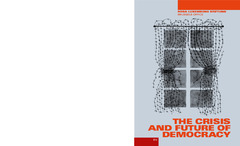Приказ основних података о документу
Authoritarian Regimes in Hungary and Serbia – a Comparative Approach
| dc.creator | Losoncz, Mark | |
| dc.date.accessioned | 2023-10-17T11:09:09Z | |
| dc.date.available | 2023-10-17T11:09:09Z | |
| dc.date.issued | 2022 | |
| dc.identifier.uri | http://rifdt.instifdt.bg.ac.rs/123456789/2966 | |
| dc.description.abstract | This chapter looks at the authoritarian regimes led by Viktor Orbán in Hungary and Aleksandar Vučić in Serbia. We examine not only the obvious similarities but also the significant differences between them. In terms of the interpretative framework adopted here, we will analyse political and economic changes as mutually related processes. In other words, the transformations in the general behaviour of political elites are addressed in conjunction with the underlying social structures. Particular attention is paid to these regimes’ predecessors, i.e. the background to the Orbán and Vučić governments’ rise to power. Specifically, in the 2000s, both the Hungarian and the Serbian governing parties pursued policies that were both pretty undemocratic and socially disastrous. Thus, the authoritarian so-called solutions offered by both Orbán and Vučić during the 2010s were very much a supposedly necessary response to the crisis of the 2000s. We place a great deal of emphasis on the special methods used by the Orbán and Vučić governments to cling to power. Following an analysis of economic issues, a section is devoted to their divergent relationships with the European Union, set against the backdrop of a broader international context. In spite of the fact that both Hungary and Serbia are receiving considerable development assistance and financial support for innovation (a substantial share of Hungary’s GDP comes from the EU), both countries have tense relations with their Western partners, and they are also facing severe criticism for their authoritarian policies. The chapter concludes that the EU’s contradictory, paternalistic carrot-and-stick approach is partly responsible for the deterioration of the situation. Finally, some cautious predictions are made about what the future might hold for Hungary and Serbia’s authoritarian regimes, taking into account the potential drivers of emancipatory change. | sr |
| dc.language.iso | en | sr |
| dc.publisher | Rosa Luxemburg Stiftung, Bruxelles | sr |
| dc.rights | openAccess | sr |
| dc.rights.uri | https://creativecommons.org/licenses/by/4.0/ | |
| dc.source | In: The Crisis and Future of Liberal Democracy (ed. Ada Regelmann – Alexandra Spaeth), Rosa Luxemburg Stifting, Bruxelles. | sr |
| dc.title | Authoritarian Regimes in Hungary and Serbia – a Comparative Approach | sr |
| dc.type | bookPart | sr |
| dc.rights.license | BY | sr |
| dc.type.version | publishedVersion | sr |
| dc.identifier.fulltext | http://rifdt.instifdt.bg.ac.rs/bitstream/id/10220/bitstream_10220.pdf | |
| dc.identifier.rcub | https://hdl.handle.net/21.15107/rcub_rifdt_2966 |

